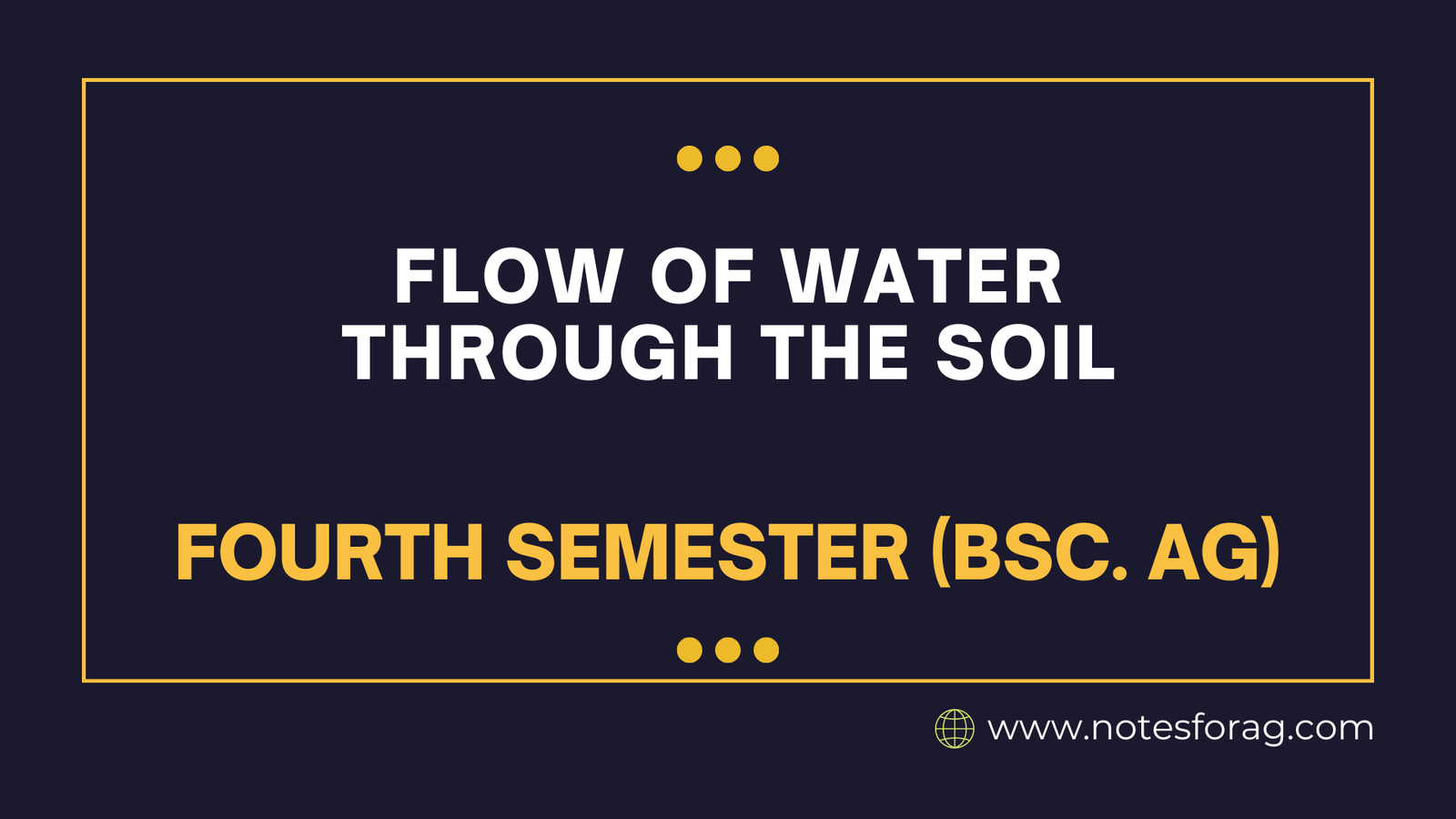The flow of water through soil is a fascinating dance between gravity, attraction forces, and the intricate pathways within the soil itself. The intricate interaction of soil pore spaces, cohesion, adhesion, and gravity drives flow of water transport through the soil.
Table of Contents
The Players:
- Water: The main character, existing in the soil as liquid water filling pores, a thin film around soil particles, and even as vapor in the air spaces.
- Gravity: The ever-present force pulling water downwards.
- Adhesion: The attractive force between water molecules and soil particles, like water clinging to a sponge.
- Cohesion: The attraction between water molecules themselves, causing them to stick together.
- Soil Pores: The tiny spaces between soil particles that provide the pathways for water to move.

Here’s a breakdown of how flow of water takes place.

Saturated Flow of Water
- Take a picture of a field that has just been rained on or a soil sample that is entirely submerged. All of the pores, whether large and little, that are present in the soil are overflowing with water in this circumstance.
- Gravity is the most powerful force in this area. Through the larger pores and fissures, water percolates through the larger pores and eventually reaches the water table, which is the subsurface zone that is saturated with groundwater. This movement is caused by the gravitational attraction.
- There is a relationship between the hydraulic conductivity of the soil and the pace of this flow. Hydraulic conductivity is a measurement of how easily water can move through the soil. The hydraulic conductivity of sandy soils with larger pores is often higher than that of clay soils with smaller pores.
Unsaturated Flow of Water
- This is a more complex scenario and occurs when not all the soil pores are filled with water. As water drains due to gravity or plant uptake, air starts to occupy some of the larger pores.
- Here, both gravity and adhesive forces (attraction between water molecules and soil particles) play a role.
- Gravity continues to pull water downward, but its influence weakens as the larger pores empty.
- Adhesion, on the other hand, tends to hold water molecules onto soil particles, creating resistance to flow.
- Water moves significantly slower in the unsaturated zone than in the saturated zone, and it is regulated by soil moisture tension (as previously stated). As the earth dries, the tension rises, making it difficult for water to move.
Vapor Flow of Water
- Even in dry soil, some water molecules exist in the form of vapour in the air pockets.
- This water vapour can migrate through the soil due to diffusion, which occurs when molecules spread from high concentration locations to low concentration areas.
- Temperature variations can cause water vapour to travel upward. As the soil surface heats up, water vapour pressure rises, causing it to travel to the cooler air above. This process is critical for getting water back to the soil’s surface layers, where it can be absorbed by plants or evaporated into the air.

Understanding water flow through soil is crucial for:
- Agriculture: Knowing how much water reaches plant roots and how quickly it drains helps farmers optimize irrigation practices and conserve water.
- Hydrology: It’s vital for understanding how water moves through watersheds and influences groundwater recharge.
- Environmental Studies: This knowledge helps us predict the impact of climate change on water availability and soil health.
So, the next time you see rain soaking into the ground, remember, it’s not just a simple downpour. It’s a complex interplay of forces and movements that sustains life on our planet.
Key Points:
- The flow of water through soil is a continuous process involving all three forms (liquid, saturated, and vapor) depending on the soil moisture content.
- Gravity dominates water movement in saturated soils, while adhesion and diffusion become more important factors in unsaturated conditions.
- Understanding these processes is essential for managing water resources in agriculture, hydrology, and environmental studies.
Frequently Asked Questions (FAQs)
What do you mean by flow of water through the soil?
The flow of water through soil is a fascinating dance between gravity, attraction forces, and the intricate pathways within the soil itself.
What are the types of flow of water?
Saturated Flow, Unsaturated Flow and Vapour Flow of water are some major types of flow.
Is there any relation between hydraulic conductivity of soil and pace of flow?
There is a relationship between the hydraulic conductivity of the soil and the pace of this flow. Hydraulic conductivity is a measurement of how easily water can move through the soil.
Related Articles

